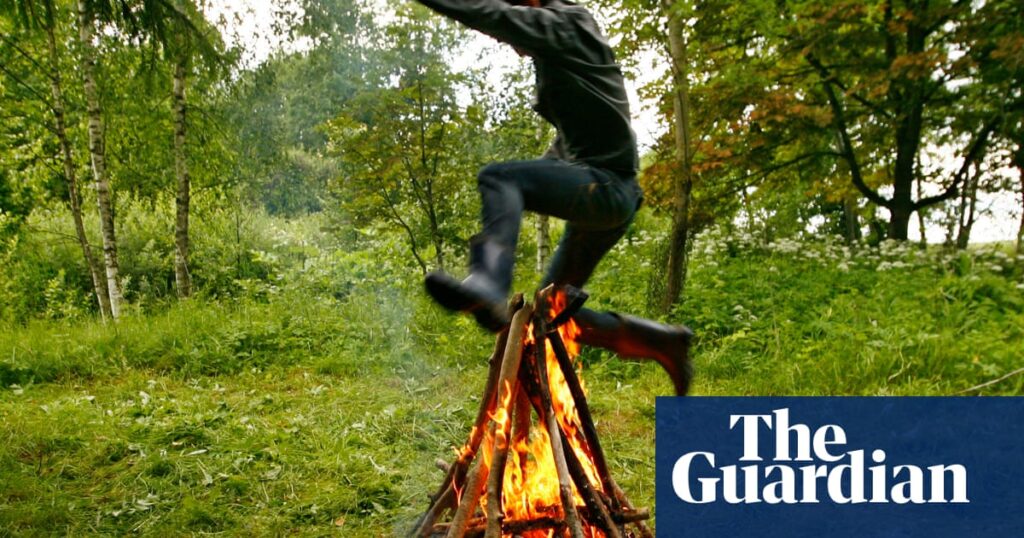The following are some of the ways to get in touch with each other:owards dusk a bonfire was lit and, one after another, the friends we were eating and drinking with hurdled the leaping flames, a pagan ritual thought to provide benefits including improved physical and mental strength, prosperity and fertility.
Further heat came from a sauna we made using five sacks of logs – too many, we agreed afterwards. When it got too hot, we escaped into the cool shallows of the pond just a few metres away, repeating this cycle several times.
As we soak up the long, light days of summer, I’m reminded of this magical time I spent in Lithuania celebrating the summer solstice, or Joninės as it’s called there. A suitable translation is Saint John’s festival, a public holiday celebrated each year on 23 and 24 June. The name pays homage to John the Baptist and coincides with his feast day, yet the traditions of Joninės are deeply rooted in the pagan celebration of midsummer, predating Christianity.
Similar pagan festivals take place in the Baltic nations of Estonia and Latvia, known as Jaanipäev and Jāņi, respectively. It’s a time when people travel from the city to gather in the countryside to eat, drink, sing and observe ancient folk traditions relating to fertility, harvest and renewal.
I travelled by train from Tallinn to Riga, and on to Kaunas, Lithuania’s second-largest city, to meet my girlfriend, Jūratė. From there, it’s a further 50 miles east to just outside Čiobiškis, where we meet Jūratė’s extended family – about 80 of them, from newly borns to octogenarians, of which Julė is the elder and true matriarch presiding over the Joninės celebrations.
The journey from Čiobiškis to the surrounding countryside requires us to take the small Padaliai-Čiobiškis ferry across the Neris river – travel at its most rustic and serene. This is followed by a short drive through a forest, which brings us to what resembles a bespoke and bijou festival, with family members having travelled from across Lithuania and beyond, all of us laden with copious amounts of food and drink for the two-day celebration.
It’s beautiful countryside – fairly flat and wooded, full of waterways providing an abundance of blue mixed with the verdant hues of surrounding vegetation, and punctuated with bright, colourful splashes from the many species of wildflower, such as lupin, cornflower, chicory, yarrow and buttercup.
We watch the Neris meandering downstream to the right, and two fishermen, Julius and Česiukas, attempting to catch a trout, perch, bream or perhaps salmon for the table. Meanwhile, Jūratė and her friend Eglė collect small posies of wild flowers to weave into flower crowns, symbols of love and fertility, while I rest on the riverbank enjoying this bucolic scene.
Tables have been joined to create a great communal banquet at the heart of the celebrations. Benches flank either side. The intriguing-looking šakotis for the first time – a layered cake resembling a tree, made of butter, eggs, flour, sugar and cream, and cooked on a spit. The jagged spikes of this cake look too sharp to eat.
Dishes brought by Jūratė’s family include salted herring, chanterelles spread on rye bread, a beef and vegetable stew which is very much to my liking, and a boiled tongue wrapped in smoked pig’s ear, which is less so.
After newsletter promotion
Other delicacies include cepelinai, dumplings made from grated potato, filled with pork mince and served with bacon gravy and either sour cream or mushroom sauce. My favourite dish is balandėliaiThe cabbage leaves are filled with minced pork and served with potatoes. The perfect meal to celebrate the longest day of year. Wash it down with cherry liqueur. Žagarės.
Around the campfire, people gather to tell stories and sing old folk songs. The brighter the fires, it is thought that the greater the harvest. Beer, or AlusThere are many options for, but those who prefer a more pagan lifestyle choose homemade sidras (cider) or even stronger samanė All of which makes camping a bit more comfortable.
The search for the missing begins at midnight. Papartis, a fern that, legend has it, produces a magic white flower on midsummer eve. Couples wander into the forest to hunt for this mythical bloom, discovering, perhaps, far more besides. I’m told the most common date that babies are born is 25 March, some nine months later on Gandrinės or Stork Day – with the arrival of the country’s national bird signifying the beginning of spring as they return from their winter migration.
Yet another name for summer solstice is Rasos, or Dew festival, since it is believed that dew collected on the morning of midsummer is especially potent for fertility, while wild herbs gathered on the night of Joninės are believed to possess magical and healing properties, since this is when nature is at its most powerful.
We combine music from LRT Opus radio with more consumption of Alus and Žagarės. It’s not important how you celebrate, it is that you are together in nature with cuckoos in the trees and skylarks high above.
The magnificence of Joninės was captured by the Lithuanian poet and philosopher Vydūnas, who described it as the “feast of the bonfire light meeting the all-encompassing sunlight”. As we make our way a few miles south to the hamlet of Mikalaučiškės for a gathering with some of Jūratė’s friends – since Joninės is very much about celebrating with friends as well as bloodlines – I think of those words written by Vydūnas a century ago. Today’s bonfire is already burning bright amid an everlasting twilight of deep orange, pink and blue, painted above the horizon.
Baltic Gently organises various Joninės packages across Lithuania, from €75 to €130


